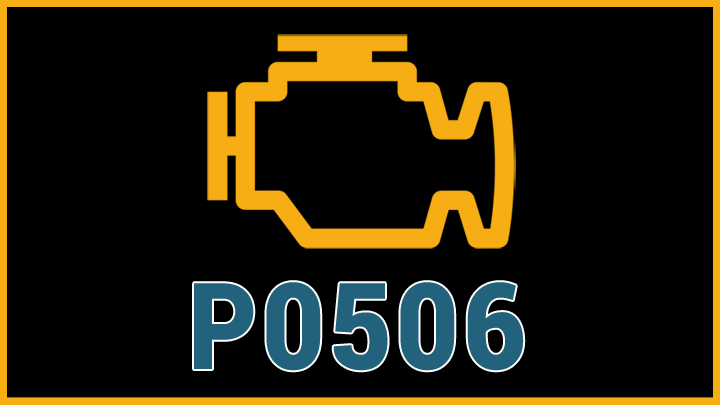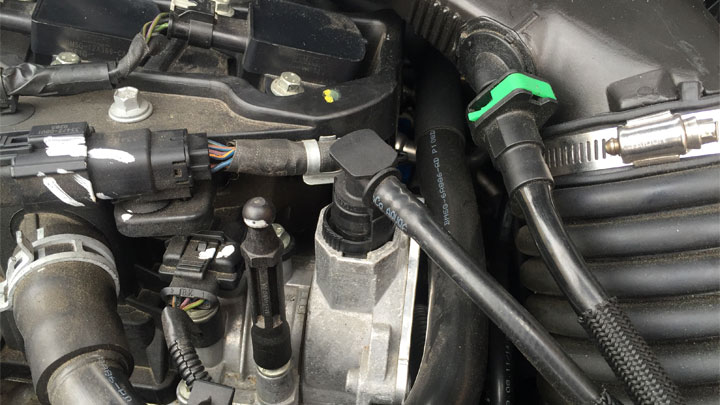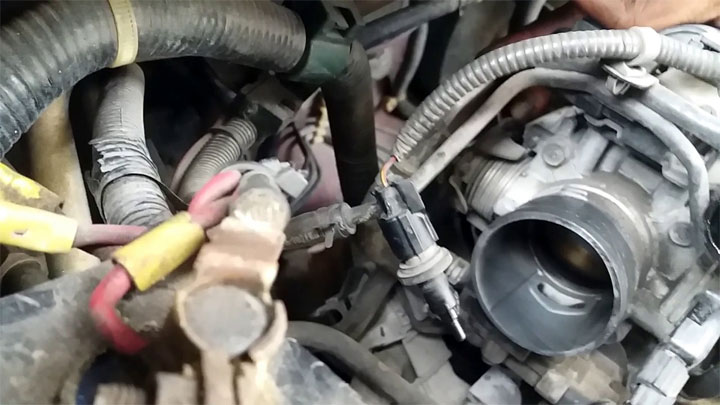P0506 Code (Symptoms, Causes, and How to Fix)
Today’s computer-controlled engines log codes for issues. P0506 indicates a discrepancy between an engine’s actual rate of idle, and the rate of idle called for by a vehicle’s computer.
Read on to learn what triggers a P0506 code, how to fix it, and whether you can continue driving in the meantime.

What Does Code P0506 Mean?
Diagnostic fault code P0506 suggests that a vehicle’s ECM/PCM has detected an engine idle speed that is lower in RPM than that which has been requested. Since a vehicle’s control software is unable to rectify this low idle condition without manipulating the current air/fuel ratio, a check engine light is illuminated and an active fault code (P0506) is stored.
This condition can be caused by a number of underlying issues, though in any event, the problem at hand must be remedied before an engine’s idle will return to normal speed with regularity. In many cases, a fault of this nature is best diagnosed and remedied by a professional technician.
Related: Code P0505, Code P0507
Symptoms of Code P0506

While diagnostic trouble code P0506 is not always associated with a range of secondary symptoms, as is common with many other DTCs, there are still a few potential symptoms that can arise under certain circumstances. Recognizing these symptoms can prove valuable when attempting to diagnose the issue at hand.
The most common symptom associated with diagnostic fault code P0506 is a low or irregular idle. In the most extreme of cases, this low idle can also cause a vehicle to stall when coming to a stop, or sitting at a red light. This problem tends to be most pronounced when a vehicle has warmed up to full operating temperature.
Causes of Code P0506

Diagnostic trouble code P0506 can be caused by numerous underlying issues, some of which tend to be more severe in nature than others. Understanding these potential issues can cut diagnostic and repair time to a bare minimum, thereby making it possible to get your vehicle back on the road in record time.
The following are several of the most common potential causes of diagnostic trouble code P0506.
- Severe vacuum leaks
- Faulty PCV valve
- Damaged or otherwise compromised throttle body
- Restricted intake or exhaust flow
- Chafed or broken wiring
- Faulty PCM
Is Code P0506 Serious?
Diagnostic trouble code P0506 is generally considered to be quite serious in nature, due to the effect that it can have on an engine’s ability to operate as intended.
A vehicle’s engine is designed to idle at a specific RPM range, at which it will not falter or stall. The exact promise of this fault is that the operating parameters are not being met in the way that a vehicle’s controlling software expects.
In the most severe of cases, a vehicle exhibiting a P0506 fault code can stall while at a stop, potentially creating a hazardous situation. This also has the potential to leave a motorist stranded with little recourse. Simply put, continuing to drive a vehicle with an active P0506 fault code is not worth the risk.
In any event, the root cause of diagnostic fault code P0506 should be diagnosed and repaired at the first available opportunity. Doing so prevents unnecessary inconvenience, and ensures that your vehicle can once again be relied upon.
If you’re not confident in your ability to track down the cause of this DTC and fix it on your own, it’s advised to make an appointment with your mechanic or trusted service center at your first opportunity.
How to Fix Code P0506

The following steps can be used to assist you in diagnosing the root cause of your vehicle’s P0506 diagnostic trouble code. As always, be sure to consult factory-specific service literature for your particular vehicle before attempting any such repairs.
#1 – Check For Additional DTCs
Before beginning the diagnostic process, check for the presence of additional diagnostic fault codes. Any such fault codes should be thoroughly diagnosed before proceeding.
#2 – Inspect For Intake/Exhaust Restrictions
Begin the diagnostic process by conducting a thorough visual inspection, carefully checking for any damage or collapsed ductwork between your engine’s air filter housing and throttle body.
While doing so, check the condition of your engine’s air filter, and replace it if necessary. Likewise, check for any obvious damage to your vehicle’s exhaust, such as crimped or crushed piping.
#3 – Inspect Throttle Body For Fouling
Next, inspect your engine’s throttle body for signs of excessive carbon fouling. Any fouling that is observed should be cleaned with an approved solvent and a non-abrasive nylon brush.
#4 – Check Condition Of Throttle Body Wiring Harness
If no obvious defects have been found to this point, your throttle body’s wiring harness pigtail should be carefully checked for signs of damage. Likewise, the throttle body’s connector should also be checked for damage.
#5 – Test For Vacuum Leaks
One should also check for the presence of severe vacuum leaks. Testing of this type can be conducted in several different manners, though the use of a smoke machine tends to be most effective.
#6 – Analyze Freeze Frame Data
If no problem has shown itself to this point, freeze frame data should be analyzed, as it relates to the code in question. This can be done with the use of almost any quality, modern scan tool. This data should be compared to factory service literature, in a bid to better isolate the issue at hand.
- P0480 Code (Symptoms, Causes, and How to Fix) - Apr 19, 2024
- Car Temperature Gauge Stopped Working? (Here’s Why) - Apr 15, 2024
- Ignition Coil vs Coil Pack (What’s the Difference?) - Apr 8, 2024
